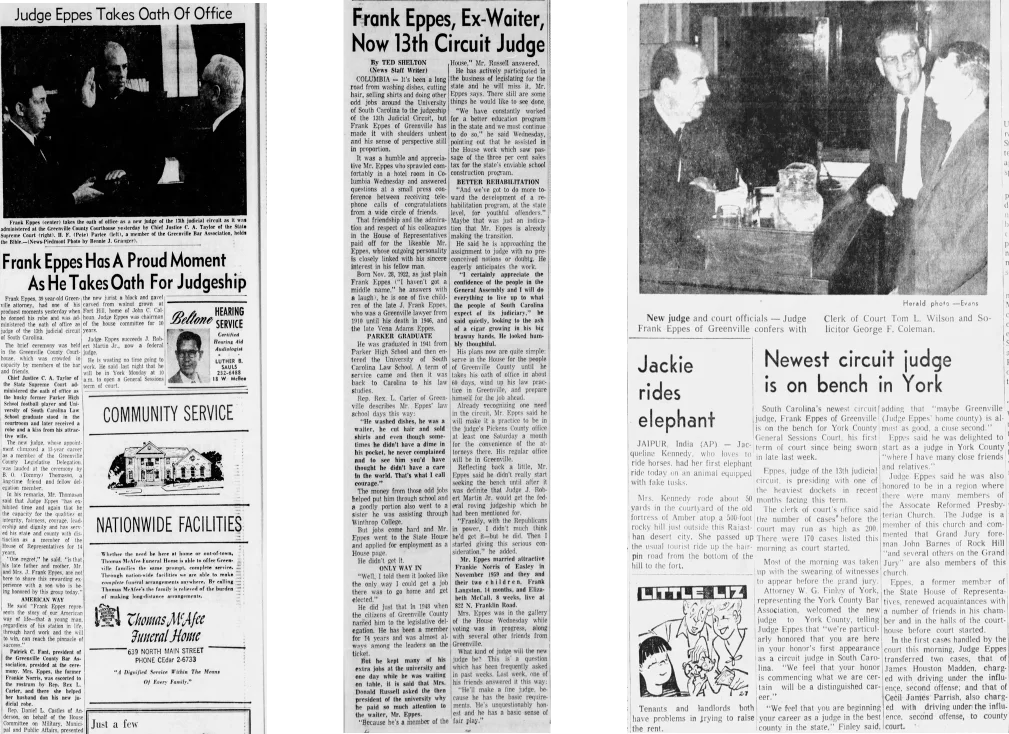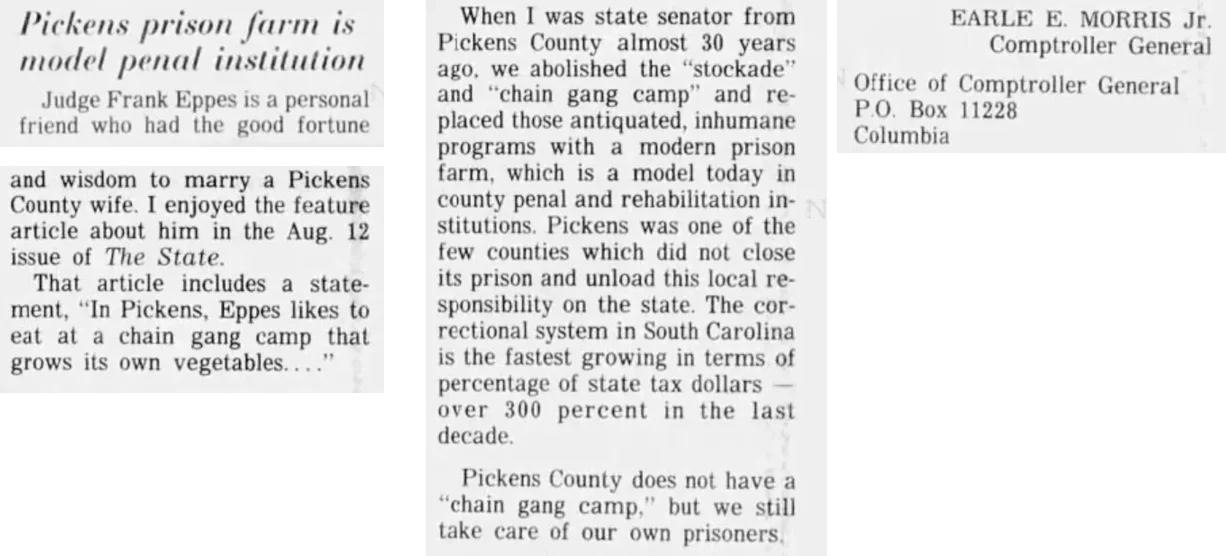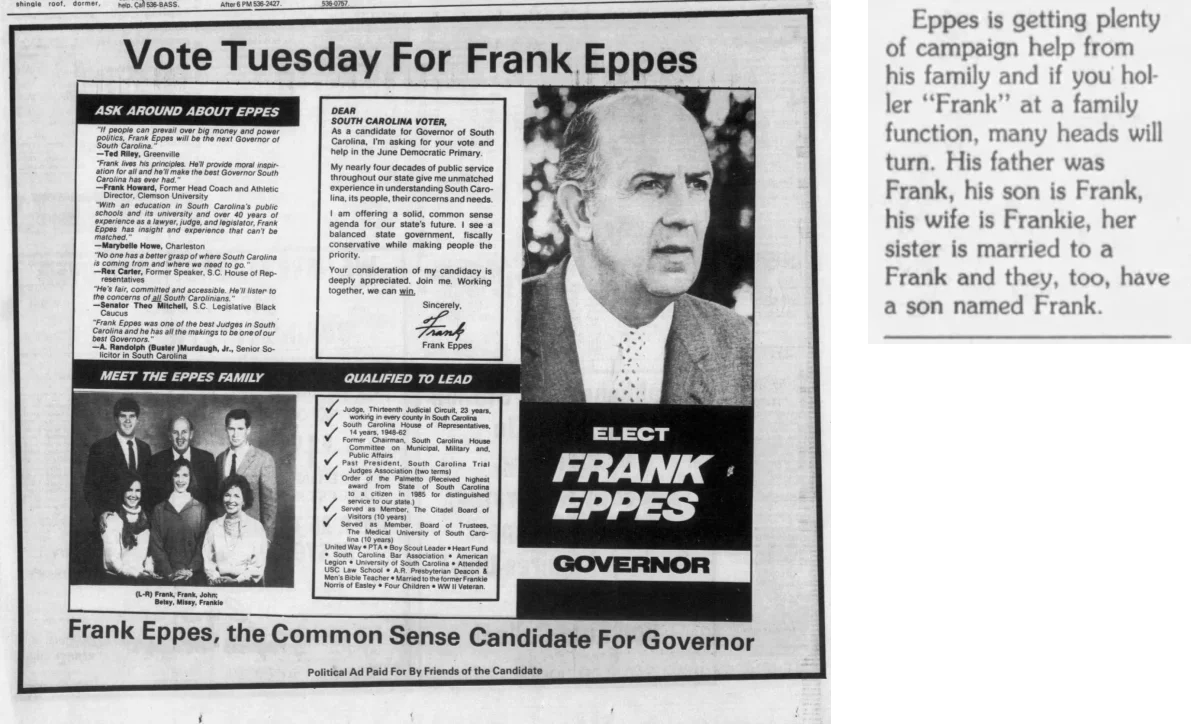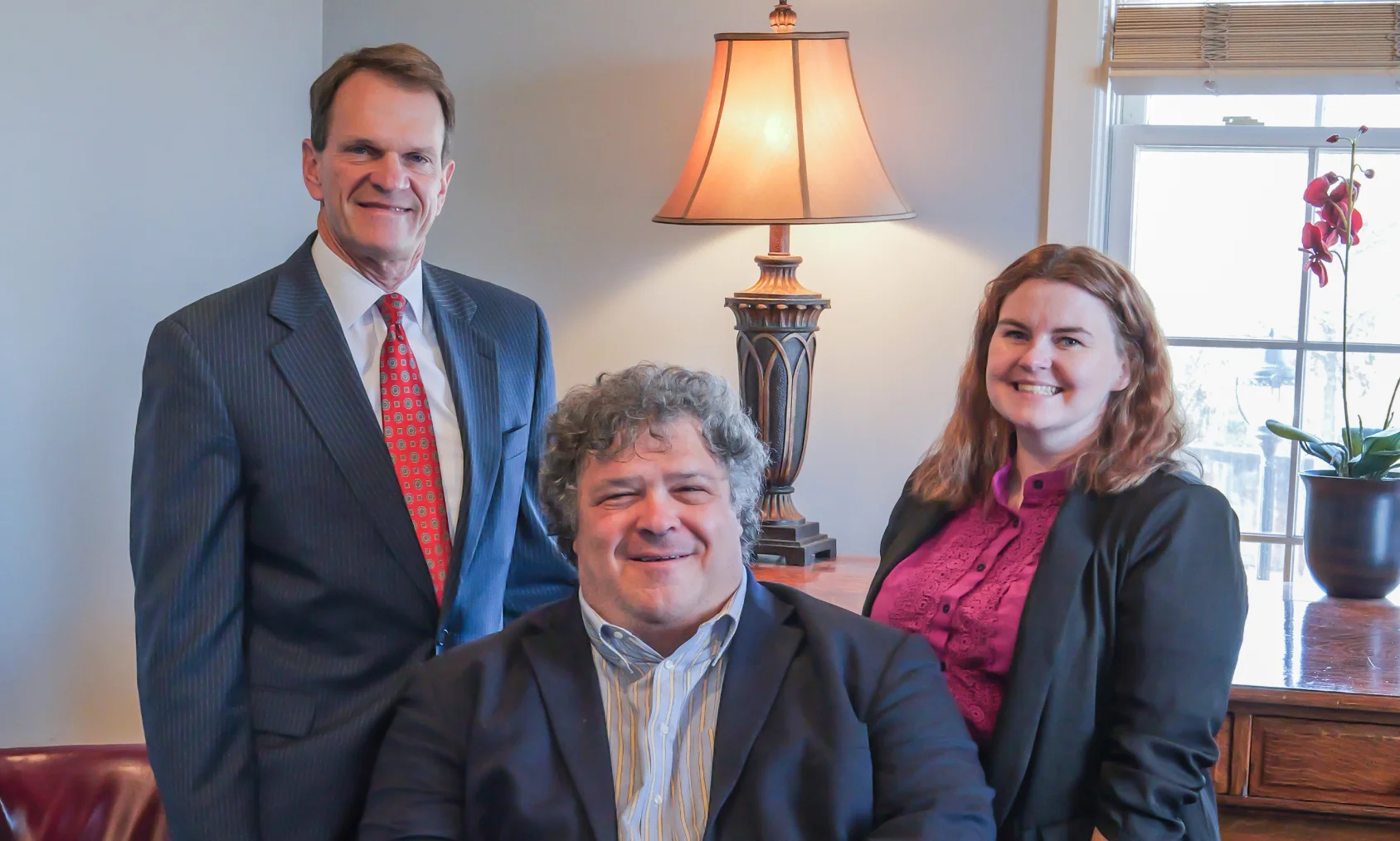Frank Eppes’ Grandfather Profiled in 1920
From History of South Carolina Volume 3, 1920 – edited by Yates Snowden
J. Frank Eppes is a Greenville lawyer. He is a successful one, and though he has been in practice ten years it is a distinction of real importance that no outside honors, such as those of political office or executive position in business, attach to his name. He has devoted himself strictly to his profession, and is enjoying the satisfaction and rewards of the real lawyer.
Mr. Eppes was born in Princeton, in Laurens County in 1881, a son of James Hardy and Emma (Davenport) Eppes. A number of generations ago the Eppes family lived in Wales. For more than a century they have been in South Carolina, since Mr. Eppes’ great-grandfather, William Eppes, came from the vicinity of Petersburg, Virginia, where his ancestors had lived for several generations, to Newberry County, South Carolina, in 1815. William Eppes was accompanied on his migration by his brother Daniel Eppes. They had married sisters, the Misses Hardy. James M. Eppes, grandfather of the Greenville lawyer, moved to Laurens County and was a teacher at the old Female Academy at Laurens. He married Mary Ann Sullivan and settled in Sullivan Township, near Princeton in Laurens County, where members of the Eppes family still live. James Hardy Eppes was born in that locality and is now retired and living with his son in Greenville. The Davenports are an old and prominent family of the lower section of Greenville County.
J. Frank Eppes attended the private school of Prof. W.P. Culbertson at Princeton, and was graduated with the A.B. degree from Erskine College at Due West in 1904. He received his legal education in the University of South Carolina, graduating LL.B. in the class of 1909, and represented his class in the law exercises, being class orator. He at once located at Greenville.
Mr. Eppes married Miss Vena Adams of Virginia. Their three children are Robert Hardy, Martha Cary and James Albert. Mr Eppes is a ruling elder in the Associate Reformed Presbyterian Church at Greenville, is chairman of its finance committee, and as such had the chief responsibilities in connection with the building of the beautiful new church, completed in the spring of 1919.
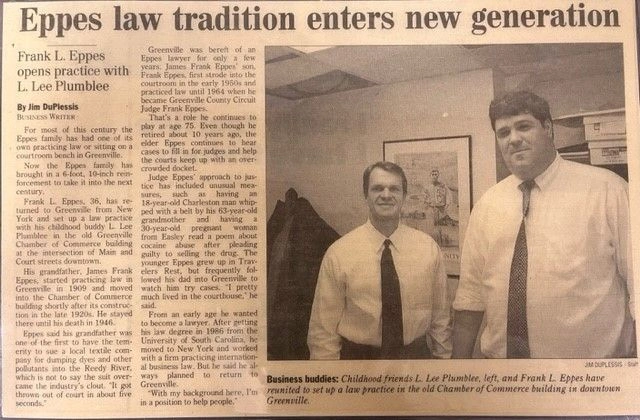
A Legal Family History
